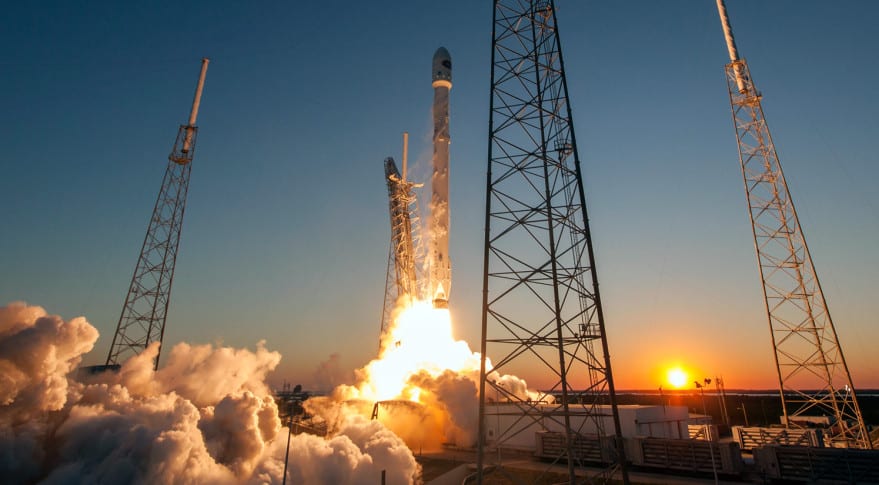
Update, Saturday:
SpaceX has delayed Sunday’s launch due to a requirement for further testing on the rocket’s fairing, or nose cone. A new launch date will be announced soon.
Original story:
Less than three days after launching a Spanish radar imaging satellite from California, SpaceX early Sunday aims to launch a Spanish telecommunications satellite from Cape Canaveral Air Force Station.
Liftoff of a Falcon 9 rocket carrying the Hispasat 30W-6 spacecraft from Launch Complex 40 is targeted for 12:35 a.m. Sunday, Feb. 25, the opening of a two-hour launch window.
The forecast looks good, with an 80 percent chance of conditions meeting launch rules, according to the Air Force’s 45th Weather Squadron.
For Madrid-based Hispasat, the mission marks a return to the Space Coast after a 16-year hiatus, since a 2002 launch on an Atlas rocket.
The satellite will be Hispsat’s 11th in orbit — more than double its total five years ago. Together they distribute more than 1,250 TV and radio channels.
“This satellite is very significant for us,” Chief Technology Officer Antonio Abad said in an email. “It is the culmination of the current growth phase of the company.”
Built by Palo Alto, California-based SSL and weighing nearly six tons at launch, the satellite will beam high-definition TV programming in Spanish and Portuguese to the Americas, Europe and Northern Africa. It also will provide broadband Internet access in rural areas and support corporate communications networks.
Latin America is Hispasat’s largest market, served by Brazil-based subsidiary Hispamar.
SpaceX’s launch last Thursday morning, Feb. 22, from California re-used a Falcon 9 flown last year to deploy the Paz satellite for Hisdesat. SpaceX did not try to land the first-stage booster for a second time.
Hispasat’s rocket is new. The first stage will attempt to touch down on SpaceX’s unmanned “drone ship” several hundred miles offshore in the Atlantic Ocean.
The ship named “Of Course I Still Love You” was damaged during SpaceX’s Feb. 6 launch of the first Falcon Heavy rocket from Kennedy Space Center.
CEO Elon Musk said two engines were taken out when the heavy-lift rocket’s middle booster smashed into the water nearby at 300 mph, spraying debris.
SpaceX did not say if the ship has been fully repaired, but it is back out at sea for the next landing attempt.
A successful booster landing is irrelevant to Hispasat’s satellite mission reaching orbit, but Abad still applauded as “a significant technological advance” SpaceX’s progress recovering and reusing rockets, which he said would make getting to space more efficient and affordable.
“Access to space gets more complicated every day and it is good to have alternatives that offer new ways to put satellites into orbit, at more competitive prices, with high reliability indexes and innovations that enable elements to be reused,” said Abad. “SpaceX offers all these advantages and for this reason we are delighted to be able to launch this satellite with them.”
The launch is SpaceX’s fifth of the year and could be the first of two from Cape Canaveral in less than a week.
NASA and United Launch Alliance are targeting a 5:02 p.m. Thursday, March 1, launch of NOAA’s GOES-S weather forecasting satellite on an Atlas V rocket.